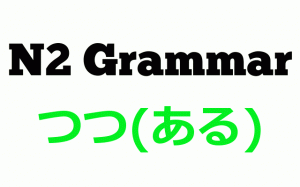 I’ve recently been using a little different strategy for my vocabulary practice. I think for the N1 level, since there are literally thousands of words to learn, I’ve been hedging my bets between reviewing words from the books I’ve read and using the standard lists. I think this offers up a good compromise between natural learning and list learning.
I’ve recently been using a little different strategy for my vocabulary practice. I think for the N1 level, since there are literally thousands of words to learn, I’ve been hedging my bets between reviewing words from the books I’ve read and using the standard lists. I think this offers up a good compromise between natural learning and list learning.
I think a lot of people focus too much on the infamous lists. I certainly did when I first started preparing for the N2, but I think the test has changed a bit because they no longer have an official vocabulary list for each level. Since they no longer have this restriction they can theoretically put any word they want to on the test. Which makes studying only the lists a little dangerous.
The other problem is that if you just study a bunch of lists the vocabulary has no context. It means something, but it doesn’t mean anything to you if that makes any sense. Since you haven’t experienced it personally I think it is hard to use it naturally or to understand how it is used. And what is the point of learning a bunch of vocabulary if you can’t really use it and don’t have a clear understanding of the word when you are reading?
In the same sense, if you simply add words that you have only experienced you might not learn all the words you need to know for the test, so it is good to study the lists a little bit.
N2 Grammar – つつ
The grammar point つつ can be used in two different ways in Japanese as a conjunction and as a auxiliary verb. Both of these uses have their nuances though of course and are used in very different circumstances. They are also confused with several other grammar points that have different meanings, but could be used in similar situations – things like ばかりだ、最中に or としている.
This week I continue the popular series on tricky JLPT grammar points and go over somethings to look out for on the JLPT. Find out what the differences are between some of these difficult grammar points so that you can increase your chances of passing the JLPT. Don’t forget to sign up for the newsletter if you haven’t already so that you can pick up the free newsletter-exclusive PDF that goes over this grammar point in detail as well as tests with some practice questions.
Put it to Use
After you’ve given the podcast a listen, put your new found knowledge to use. Give this grammar point a try in the comments below. This is a great way to lock in your knowledge and test your understanding of the grammar. Also, it’ll help your fellow JLPTers with some more examples of what the grammar point is like.
Podcast: Play in new window | Download (Duration: 23:22 — 21.4MB)
Subscribe: RSS











Isn’t つつ just the shortened version of つつある?
Aaaand, that’s me not reading the image. Nevermind that!
Thank you very much for teach about tutu.
pls more ,like other gramar